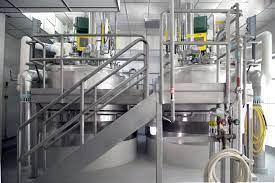In the realm of pharmaceuticals, the pursuit of innovation and efficiency is an ongoing quest. One of the most intriguing developments in the industry is the advent of Highly Potent Active Pharmaceutical Ingredients (HPAPIs). These exceptional compounds have transformed the landscape of drug development, enabling the creation of potent and precise medications that target diseases with unparalleled efficacy. In this blog, we will dive into the fascinating world of HPAPIs, understanding what they are, their significance, challenges, and the future they promise.
What are Highly Potent APIs?
Highly Potent Active Pharmaceutical Ingredients, often referred to as HPAPIs, are a specialized class of chemical compounds used in the development of medications. They are characterized by their exceptional potency, with the ability to elicit a therapeutic effect even at extremely low doses. These compounds are used primarily in the treatment of severe and life-threatening conditions, such as cancer, autoimmune disorders, and infectious diseases.
The uniqueness of HPAPIs lies in their ability to target specific molecular pathways with precision, minimizing off-target effects and reducing the overall toxicity of the drug. This is particularly crucial when treating conditions that demand aggressive intervention while preserving patient safety and quality of life.
Significance of HPAPIs
The significance of HPAPIs in modern medicine cannot be overstated. They have revolutionized drug development by allowing the creation of medications that were once deemed impossible due to their toxicity or the unavailability of effective delivery methods. The key advantages of HPAPIs include:
-
Targeted Therapies: HPAPIs allow for highly targeted therapies, focusing on the root causes of diseases and minimizing collateral damage to healthy tissues.
-
Reduced Side Effects: The precision of HPAPIs reduces the incidence of adverse side effects, significantly improving the quality of life for patients.
-
Lower Dosage Requirements: Since HPAPIs are potent, lower doses are required, which not only makes treatment more cost-effective but also eases the burden on patients.
-
Enhanced Efficacy: These compounds often result in superior treatment outcomes, especially in challenging conditions like cancer, where traditional treatments may have limited success.
-
Expanded Therapeutic Options: HPAPIs have opened the door to novel treatment options for previously untreatable diseases, expanding the possibilities of medicine.
Challenges in Developing and Handling HPAPIs
Working with Highly Potent APIs presents unique challenges for pharmaceutical companies and researchers. These challenges include:
-
Safety: Ensuring the safety of workers who handle HPAPIs is paramount. Strict containment measures, specialized equipment, and rigorous safety protocols are essential to minimize exposure risks.
-
Manufacturing Complexity: The manufacturing process for HPAPIs is often complex, requiring specialized facilities and equipment. This increases production costs and may limit the accessibility of these medications.
-
Regulatory Compliance: Regulatory authorities worldwide impose stringent requirements for handling and manufacturing HPAPIs. Companies must navigate complex regulatory pathways to bring these medications to market.
-
Stability: Some HPAPIs may be sensitive to environmental factors, making their storage and transportation a critical concern.
The Future of HPAPIs
The future of Highly Potent APIs is bright and filled with possibilities. As technology and knowledge continue to advance, we can expect to see:
-
Wider Application: The development of more potent and specific HPAPIs will broaden their application to an even wider range of diseases, potentially transforming the treatment landscape for various conditions.
-
Personalized Medicine: With the precision of HPAPIs, the future of medicine may increasingly focus on personalized treatments, tailored to an individual’s unique genetic makeup and disease profile.
-
Improved Drug Delivery: Innovations in drug delivery systems will enhance the efficacy of HPAPIs, making them more accessible and efficient.
-
Collaborative Efforts: Collaboration among pharmaceutical companies, research institutions, and regulatory bodies will lead to the development of better safety protocols, reducing the risks associated with HPAPIs.
In conclusion, Highly Potent Active Pharmaceutical Ingredients represent a groundbreaking advancement in the pharmaceutical industry. Their precision, efficacy, and potential for innovation make them a powerful tool in the development of medications for a range of challenging and life-threatening conditions. As researchers continue to push the boundaries of what is possible, the future of HPAPIs promises to be transformative, offering hope to patients and healthcare providers alike.


